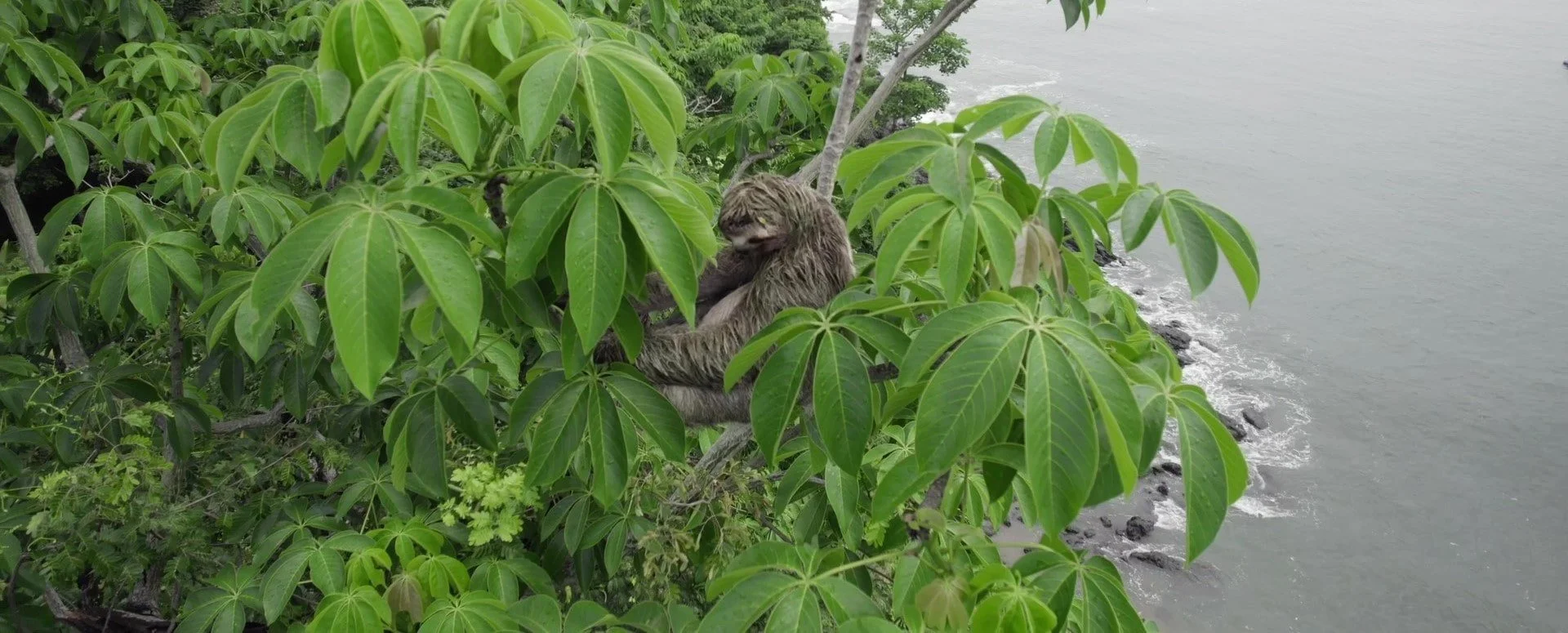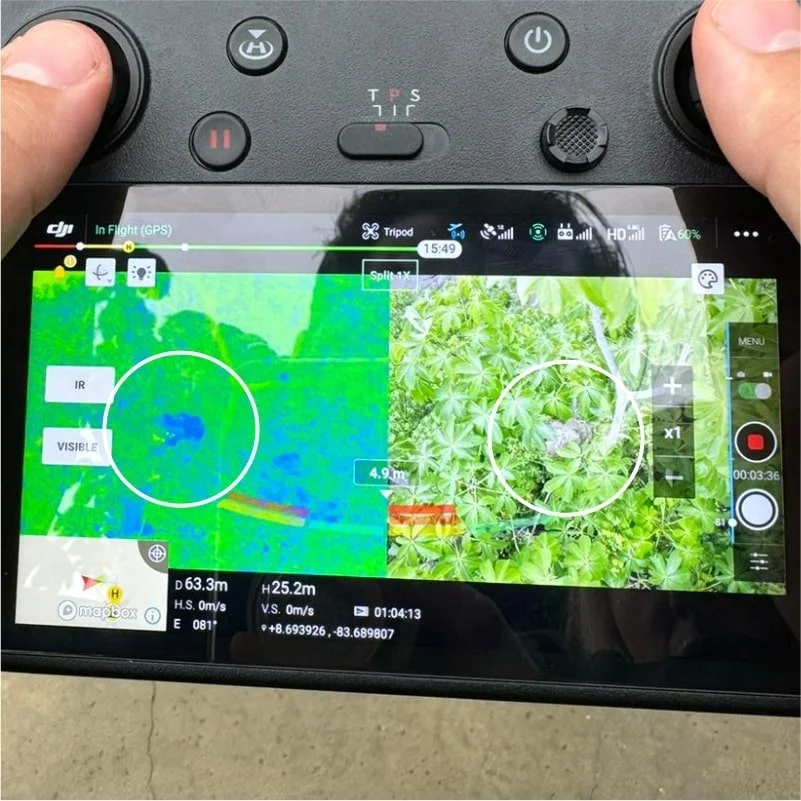Osa Peninsula: One of the Best Places to See Wildlife… But Not Sloths
The Osa Peninsula, located in the South Pacific area of Costa Rica, is one of the most biodiverse hotspots on the planet, containing 2.5% of global terrestrial biodiversity in just 1,200 km²! On social media, you can see footage of tour guides constantly spotting tapirs, monkeys, and even jaguars.
Tapir (Tapirus bairdii), Corcovado National Park. Photo: Alex Jones, Wildlife Film Pro
Where Are the Sloths?
While there are many sloths on the Caribbean coast and in other well-known hotspots like Manuel Antonio and La Fortuna, sloths are much more difficult to spot in areas like the Osa Peninsula. We've been asked by local tour guides and even rangers from the famous Corcovado National Park why they don't see many sloths there. We don't know the answer yet.
Tamandua anteater (Tamandua mexicana), Osa Peninsula. Photo: Alex Jones, Wildlife Film Pro.
It could be because the healthy forests in these areas provide plenty of places for the sloths to hide, or perhaps there simply aren’t as many sloths living in these regions. Whatever the reason, we need to find out.
A Potential Site for the Great Sloth Census
The goal of our visit to Osa was to learn more about the sloth populations in this region as part of our ongoing efforts to conduct the first-ever sloth population census in Costa Rica.
Dr. Cliffe and her husband, Alex Jones, at the entrance of Corcovado National Park.
Sloths have spent millions of years evolving to go unnoticed, living high in the canopies of tropical rainforests where they blend into the surrounding flora. They go undetected by the senses of their predators—and of would-be sloth researchers and their equipment.
They are such masters of disguise that counting them to know how many there are and understanding their population trends is a challenge. If sloths started to disappear, would anyone even notice? Of the seven sloth species, three are vulnerable and critically endangered, while the others are listed as "least concern." However, without reliable data on population stability, these sloths could be at significant risk.
The First Glance at the Sloths of Osa
During our visit to Osa, we stayed at Copa de Arbol Eco Resort, a beautiful accommodation nestled between the beach and the rainforest; perfect for spotting wildlife! We searched for sloths using both our eyes and our special drone equipped with a thermal camera. We spoke to the hotel staff and local wildlife guides, trying to piece together the puzzle.
Using our drone, we found a sloth colder than the surrounding trees! Maintaining a constant body temperature is too energetically expensive for sloths.
We regularly saw two sloths in the trees on the beach outside the hotel, one of which had a baby—a great sign of a healthy sloth population! We also identified the thermal fingerprint of sloths on the drone for the first time and learned about sloths living in very high numbers in the mangrove trees along the Sierpe River.
We will be returning in the future to continue the census. The next step is to bring a very special member of the team to help us with our mission—our sloth detection dog, Keysha! She is specially trained to sniff out sloth poop on the forest floor and is helping us solve many sloth mysteries.
We want to give a huge thank you to Copa de Arbol and their staff for hosting us and collaborating on this important research about sloth populations.







